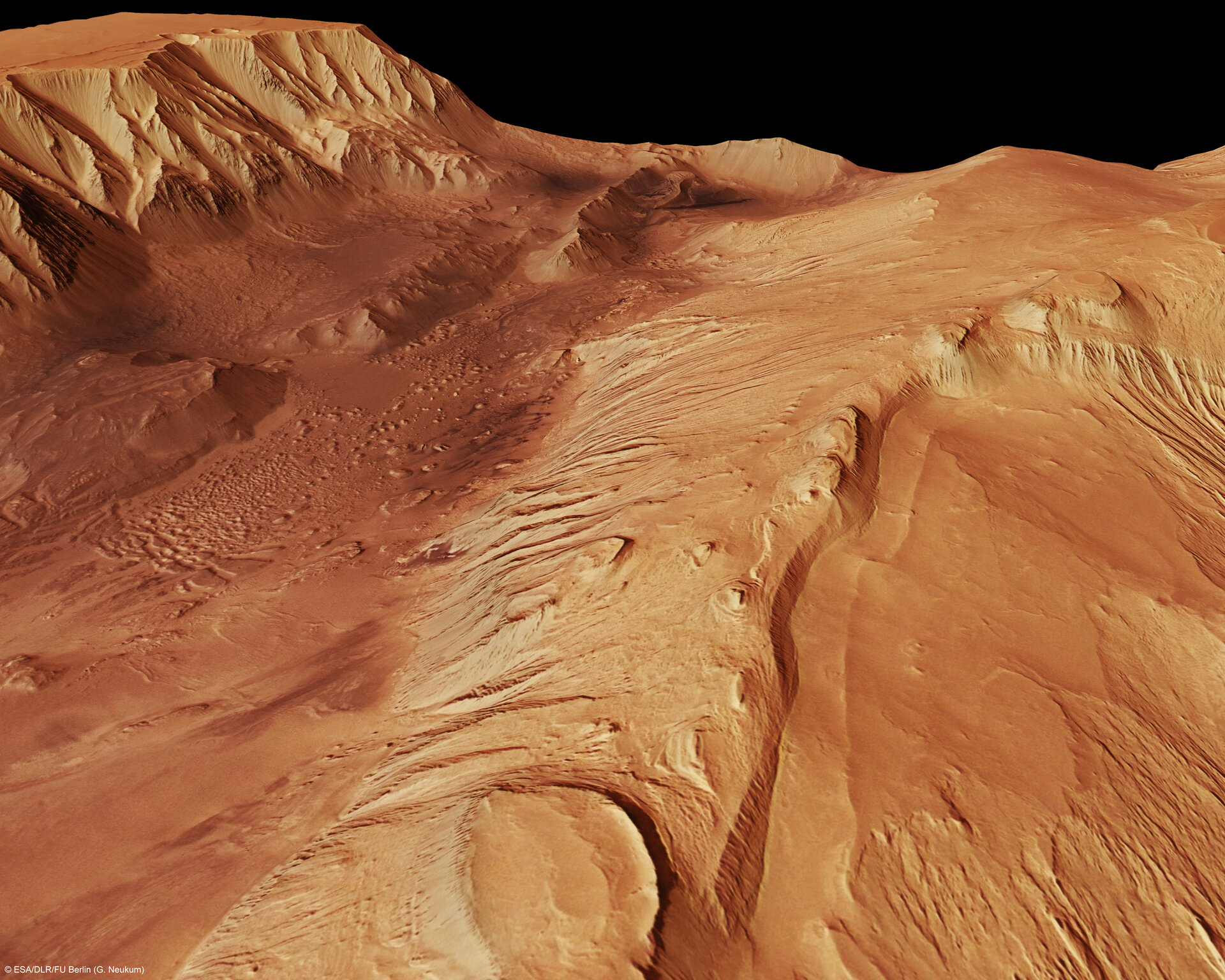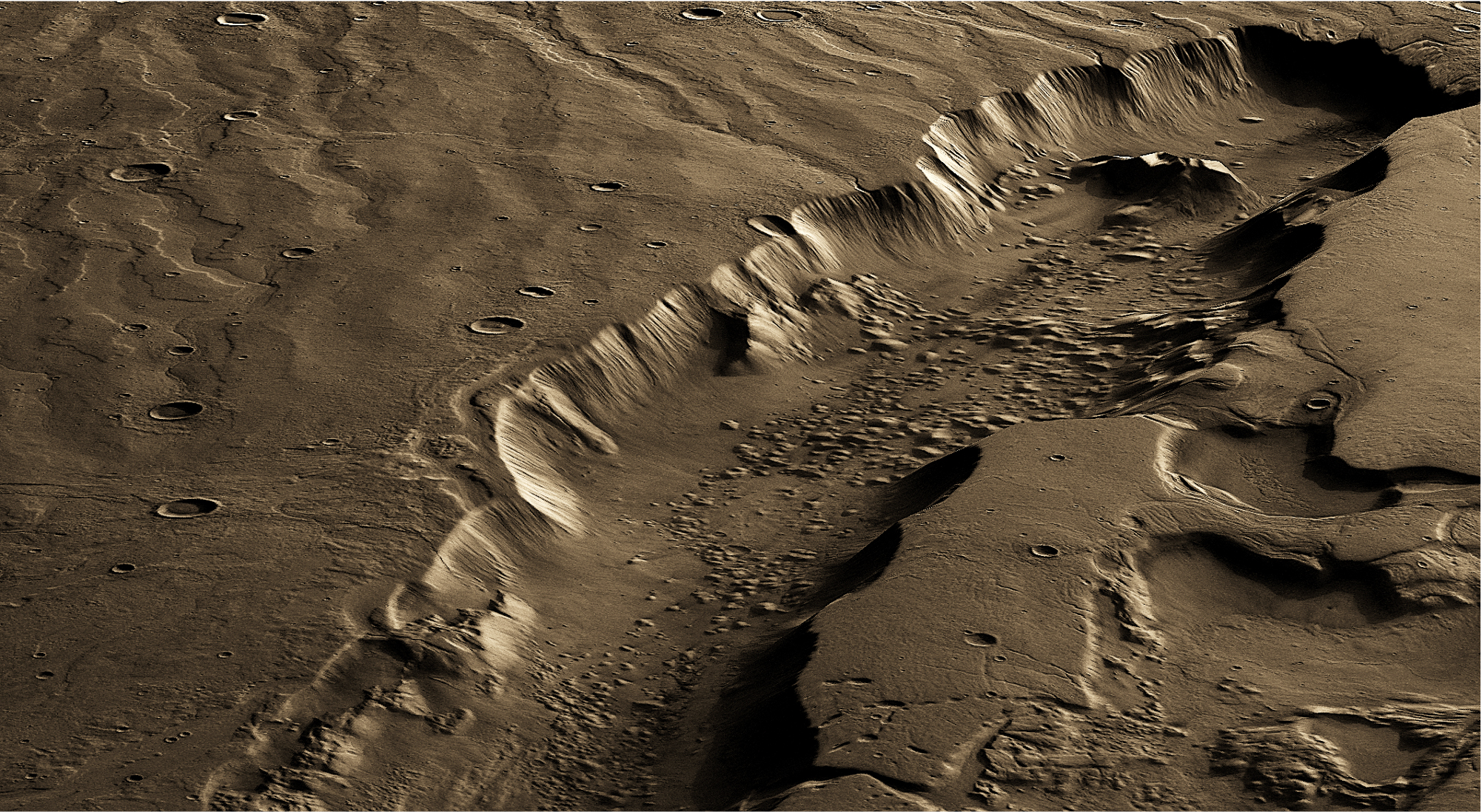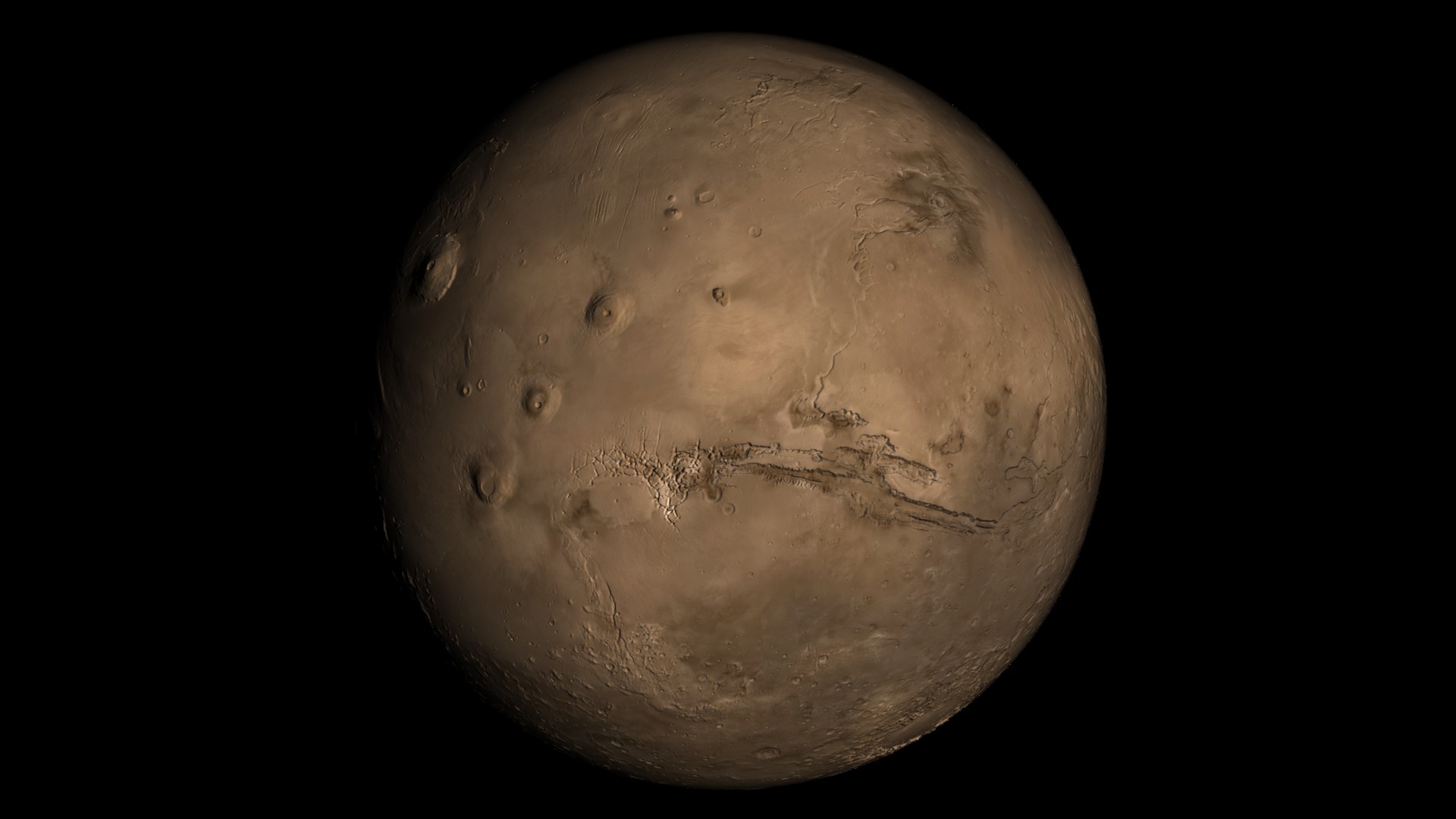Scientists spot water ice under the 'Grand Canyon' of Mars
"We found a central part of Valles Marineris to be packed full of water — far more water than we expected."

Water ice may be lurking just a few feet below the Martian surface at one of the Red Planet's most dramatic sites.
That's according to new research based on data gathered by the Trace Gas Orbiter (TGO), part of the ExoMars mission operated by the European Space Agency (ESA) and its Russian counterpart, Roscosmos. ExoMars includes both TGO, which launched in 2016, and the Rosalind Franklin rover due to launch to Mars next year. Among the instruments aboard TGO is one called the Fine Resolution Epithermal Neutron Detector (FREND), which can detect hydrogen, one of the two elements that make up water. New analyses of FREND's data show high levels of hydrogen at a site called Candor Chaos, located near the heart of the massive canyon system dubbed Valles Marineris.
"We found a central part of Valles Marineris to be packed full of water — far more water than we expected," Alexey Malakhov, a senior scientist at the Space Research Institute of the Russian Academy of Sciences and a co-author of the new paper, said in an ESA statement. "This is very much like Earth's permafrost regions, where water ice permanently persists under dry soil because of the constant low temperatures."
Related: Largest canyon in the solar system revealed in stunning new images
We found a central part of Valles Marineris to be packed full of water."
Alexey Malakhov, study co-author
Valles Marineris is the largest canyon in the solar system — 10 times longer and five times deeper than the Grand Canyon here on Earth — and one of the most striking features of the Red Planet, running alongside much of the Martian equator. When scientists have looked for Mars water ice in the equatorial region before, they have only been able to study the surface dust, and they have found only small amounts of water.
The new research expands the depth that scientists can study, giving them a look at the upper subsurface as well as the immediate surface.
"With TGO we can look down to one meter [3 feet] below this dusty layer and see what's really going on below Mars' surface — and, crucially, locate water-rich 'oases' that couldn't be detected with previous instruments," Igor Mitrofanov, another scientist at the Space Research Institute of the Russian Academy of Sciences, lead author of the new study and principal investigator of the FREND instrument, said in the statement.
Breaking space news, the latest updates on rocket launches, skywatching events and more!

Learn all about the search for water on Mars.
The researchers said that if all of the hydrogen they detected is present in the form of water ice, the precious compound could make up as much as 40% of near-surface material in the area. However, FREND could also be detecting water built into local minerals, although the scientists believe that is less likely than ice.
"This finding is an amazing first step, but we need more observations to know for sure what form of water we're dealing with," Håkan Svedhem, the former ESA project scientist for the ExoMars Trace Gas Orbiter and a co-author on the new study, said in the statement. "Regardless of the outcome, the finding demonstrates the unrivalled abilities of TGO's instruments in enabling us to 'see' below Mars' surface — and reveals a large, not-too-deep, easily exploitable reservoir of water in this region of Mars."
The new research is based on data that FREND gathered between May 2018 and February 2021, according to the ESA statement.
"Knowing more about how and where water exists on present-day Mars is essential to understand what happened to Mars' once-abundant water and helps our search for habitable environments, possible signs of past life, and organic materials from Mars' earliest days," Colin Wilson, ESA's ExoMars Trace Gas Orbiter project scientist, said in the statement.
A paper describing the research is being published in the March 2022 issue of the journal Icarus and was published online on Nov. 19.
Email Meghan Bartels at mbartels@space.com or follow her on Twitter @meghanbartels. Follow us on Twitter @Spacedotcom and on Facebook.

Meghan is a senior writer at Space.com and has more than five years' experience as a science journalist based in New York City. She joined Space.com in July 2018, with previous writing published in outlets including Newsweek and Audubon. Meghan earned an MA in science journalism from New York University and a BA in classics from Georgetown University, and in her free time she enjoys reading and visiting museums. Follow her on Twitter at @meghanbartels.


